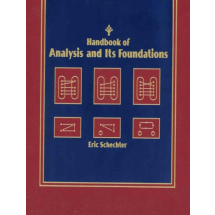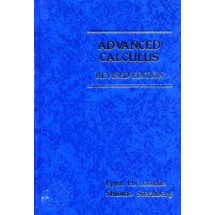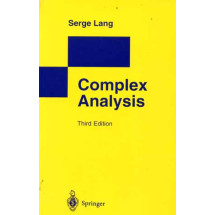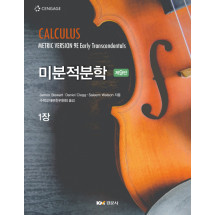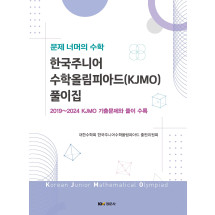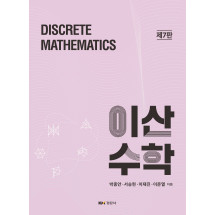Preface.
Introduction: How to Become a Better Writer and Why You Should.
How to Become a Better Writer and Why You Should.
I. A PRACTICAL GUIDE TO WRITING ESSAYS.
1. Structuring the College Essay.
Convention and the College Essay.
1.1 Essay Structure
Banning Alcohol on College Campuses.
Conventions and Expectations at Large: The Importance of Format.
2. Generating Ideas.
Conventional Wisdom About Getting Started.
2.1 Establishing Your Purpose and Assessing Your Audience.
2.2 Generating Ideas.
Generating Ideas.
Freewrite.
Make A List.
Conventions and Expectations at Large: Preliminary Activities and Rituals.
Cluster: Discuss Your Ideas with Others.
3. Outlining and Drafting.
Conventional Wisdom About First Attempts.
3.1 Drafting a Thesis.
Some Important Conventions: Drafting Your Thesis.
3.2 Outlining Your Ideas.
Conventions and Expectations at Large: Agendas as Structure.
4. Writing Paragraphs.
Paragraph Conventions.
4.1 The Topic Sentence.
For a Standalone Paragraph.
Departing from the Convention: Placing the Topic Sentence Last.
4.2 Supporting Details.
4.3 The Order of Body Paragraphs and Supporting Details.
4.4 Writing the Introduction.
Departing from the Convention: Implying the Thesis or Placing It at the End.
4.5 Writing the Conclusion.
Conventions and Expectations at Large: Greetings and leave-takings.
5. Revising and Editing.
Revising and Editing as Convention.
5.1 Revising Content.
5.2 Revising Organization.
5.3 Revising for Effective Expression.
5.4 Writing a Title.
5.5 Editing.
5.6 Editing English as a Second Language.
Conventions and Expectations at Large: Considering the Expectations of Others.
II. A PRACTICAL GUIDE TO CORRECTNESS.
6. Eliminating Sentence Fragments.
Completeness and Convention.
6.1 Sentence Fragments.
Departing from the Convention: Writing Intentional Fragments.
Conventions and Expectations at Large: The Conventions of E-mail.
7. Eliminating Run-On Sentences and Comma Splices.
Conventions for Separating and Joining.
7.1 Run-on Sentences and Comma Splices.
Departing from the Convention: Using Commas to Join Short Independent Clauses.
Conventions and Expectations at Large: Stream-of-Consciousness.
8. Using Verbs Correctly.
Context, Conventions, and Verbs.
8.1 Making Subjects and Verbs Agree.
8.2 Avoiding Problems with Tense Shift.
Conventions and Expectations at Large: The Importance of Correspondence.
9. Using Pronouns Correctly.
Conventions for Pronouns.
9.1 Making Pronouns and Antecedents Agree.
An Important Convention: Using a Pronoun or Antecedent-Not Both.
9.2 Avoiding Biased Pronouns.
Departing from the Convention: Using Plural Pronouns with Singular Indefinite Pronoun Antecedents.
9.3 Avoiding Problems with Pronoun Reference.
9.4 Using Subject, Object, and Possessive Pronouns Correctly.
An Important Convention: Placing Pronouns Last.
Conventions and Expectations at Large: Responding to Changes in Gender Roles.
10. Using Modifiers Correctly.
Conventions for Modifiers.
10.1 Adjectives and Adverbs.
An Important Convention: Using Real, Really, and Very.
10.2 Dangling and Misplaced Modifiers.
10.3 Comparisons.
Conventions and Expectations at Large: Descriptive Emotions.
11. Spelling and Capitalizing Correctly.
Conventions for Spelling and Capitalization.
11.1 Spelling Words Correctly.
An Important Convention: Dividing Words.
11.2 Using Capital Letters Correctly.
Departing from the Convention: Capitalizing in E-mail.
Conventions and Expectations at Large: Spelling Variations.
12. Using Commas Correctly.
Conventions for Commas.
12.1 Commas.
Departing from the Convention: Omitting Commas.
Conventions and Expectations at Large: Separating and Joining.
13. Using Other Forms of Punctuation Correctly.
Conventions for Punctuation.
13.1 Using Marks to End Sentences.
13.2 Using Semicolons.
13.3 Using Colons.
13.4 Using Parentheses and Dashes.
13.5 Using Quotation Marks.
13.6 Using Apostrophes.
An Important Convention: Using Contractions.
13.7 Using Hyphens.
Conventions and Expectations at Large: The Importance of Signals.
III. A PRACTICAL GUIDE TO IMPROVING SENTENCES.
14. Improving Sentence Style.
Style and Convention.
14.1 Sentence Variety.
14.2 Parallelism and Consistent Structure.
14.3 Active and Passive Voice.
Conventions and Expectations at Large: Style and Culture.
15. Improving Word Choice.
Conventions for Word Choice.
15.1 Using Specific Words.
15.2 Avoiding Wordiness.
15.3 Avoiding Clichs.
15.4 Using the Correct Word.
15.5 Selecting the Right Level of Language.
15.6 Building Your Vocabulary.
Conventions and Expectations at Large: Euphemisms and Doublespeak.
Activity.
Writing Topic.
IV. APPLICATIONS.
A. Editing Practice.
Editing Practice 1sentence Fragments, Run-on Sentences, and Comma Splices.
Editing Practice 2subject-Verb Agreement and Pronoun-Antecedent Agreement.
Editing Practice 3subject-Verb Agreement, Tense Shift, and Pronoun Reference.
Editing Practice 4pronouns, Modifiers, and Tense Shifts.
Editing Practice 5run-On Sentences, Comma Splices, and Commas.
Editing Practice 6sentence Fragments, Modifiers, Person Shift, Apostrophes.
Editing Practice 7spelling, Capitalization, and Punctuation.
Editing Practice 8a Range of Errors. B. 115 Ideas for Writing.
100 Ways to Write.
16. Writing Assignments.
V. Reference Guides.
1. Using Patterns of Development.
Description.
Essay: A Day at the Fair.
Narration.
Essay: The Sudden Storm.
Exemplification.
Essay: Wardens for Growing Hope.
Process Analysis.
Essay: Making the Most of a Writing Center Conference.
Comparison-Contrast.
Essay: Contrasting Images of Television Families.
Cause-and-Effect Analysis.
Essay: Mom, There's a Coyote in the Backyard!
Definition.
Essay: The Binge Drinker.
Classification.
Essay: essies, Malcontents, and Pickies: Bad Restaurant Behavior.
Argumentation.
Essay: What's for Lunch? Fast Food in the Public Schools.
2. Researching and Using Sources.
Locating Sours.
Evaluating Sources.
Quoting Source Material.
Paraphrasing Source Material.
Summarizing Source Material.
Conducting Interviews.
Crediting Sources.
Avoiding Plagiarism.
A Sample Research Paper: The Importance of Animal Experimentation.
3. Writing a Summary.
A Sample Summary. Excerpt from Essentials of Sociology: A Down-to-Earth Approach, The Origins of Sociology.
4. Writing and Working Collaboratively.
Collaborating on Individual Writing Projects.
Collaborating on Group Writing Projects.
5. Writing Essay Examination Answers.
Writing Within Time Limits.
A Sample Response to an Essay Question.
6. Writing and Speaking English as a Second Language.
Sentences.
Nouns.
Verbs.
Pronouns.
Modifiers.
Prepositions.
Idioms.
Helpful Sections of the Book.
7. The Parts of Speech.
8. Glossary of Grammatical and Rhetorical Terms.
Index.



